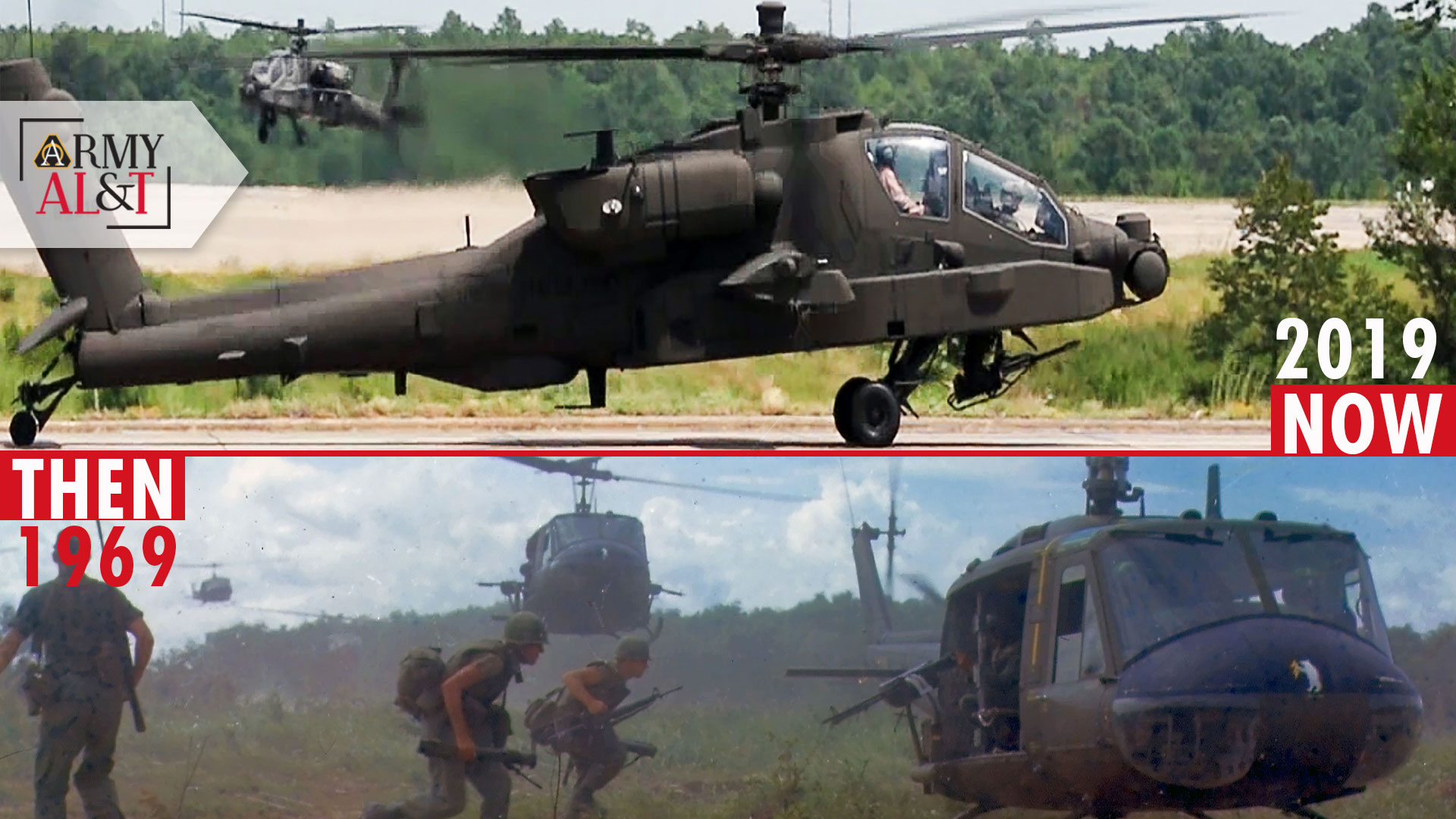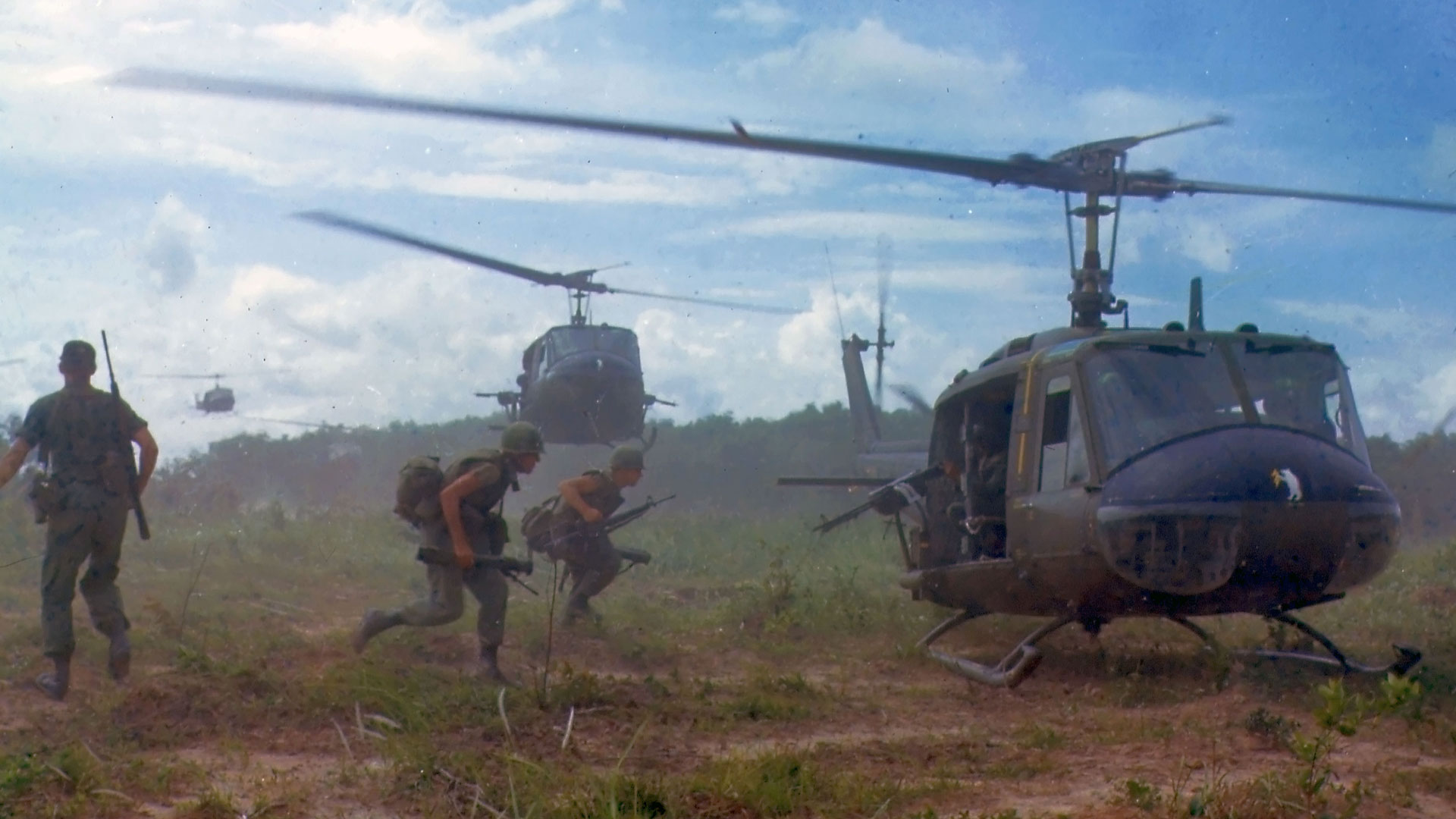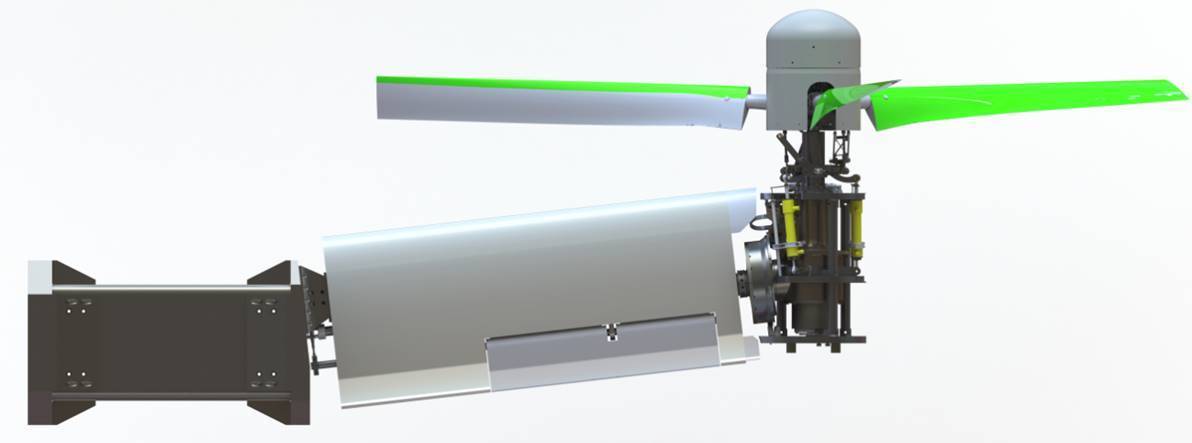
To look back 50 years at Army aviation is, in some ways, to look ahead a decade.
by Margaret C. Roth
Back in 1969, in the thick of the Vietnam War and at the height of the Cold War, Army aviation had a relatively small part in America’s thinking about how to defeat the Soviet Union should armed conflict develop. Back then, the focus of Army aviation was on Vietnam, and its mainstays were the UH-1 Iroquois, popularly known as the Huey, the CH-47 Chinook transport and AH-1 Cobra attack helicopters. The Army’s Aviation Branch would not even come into existence until 1983.
But in Vietnam, where all three of those helicopters saw extensive use, the Army was finding that there was much to learn about their capabilities and limitations. Helicopters did heavy duty in transport, reconnaissance, strike and medevac missions. Could they carry more? Fly farther? Strike harder? “See” more?
Fifty years ago, the Army began laying the foundation for a more robust and diversified helicopter fleet that could play a decisive role in a possible war against the Eastern Bloc. Today, the Army is laying the foundation for a more versatile, lethal and survivable fleet of aircraft that will support U.S. overmatch on a battlefield that is far more complex than in 1969, encompassing the multiple domains of land, air, sea, cyber and space.
Some of the same questions asked in 1969 are driving the current modernization of Army aircraft, captured in the U.S. Army Futures Command’s Future Vertical Lift initiative, with a target delivery date of 2028 to 2030.
NEW WORKHORSE
The lead story in the February 1969 issue of Army Research and Development, the precursor to Army AL&T magazine, laid out the aviation and other priorities contained in DOD’s annual posture statement, “The 1970 Defense Budget and Defense Program for Fiscal Year 1970-74.”
In it, Secretary of Defense Clark M. Clifford, who by then had been succeeded by Melvin R. Laird, outlined a plan to initiate the design of a new Army Utility Tactical Transport Aircraft System (UTTAS), capable of carrying “about double the number of troops (plus a crew of three) currently carried in the UH-1 Huey helicopter, the workhorse of the U.S. Army in Vietnam.”
(Indeed, a short staff-written article on Page 35 of that issue reported that medevac statistics released by the Army’s Office of The Surgeon General for the first 10 months of 1968 in Vietnam reflected “almost a doubling of the workload of helicopter and medical crews, compared to 1967 statistics. … Army Medical Department helicopters transported more than 170,000 patients in 1968, as compared to 94,000 during the same period in 1967.”)

U.S. Army UH-1D helicopters airlift Soldiers during a search-and-destroy mission northeast of Cu Chi, South Vietnam, in 1966. The UH-1 Iroquois, popularly known as the Huey, was a mainstay of Army aviation during the Vietnam War. (U.S. Army photo by Sgt. 1st Class James K.F. Dung)
The lead article, also staff-written, continued, “The Huey was designed to carry 11 troops with a crew of two, but additional protective armor and the need for two side-door gunners reduced the payload to between six and eight men.
“The report states [the] estimated 10-year system cost of a UTTAS-equipped helicopter force ‘could be only a little more than half the cost of operating a UH-l force with an equivalent lift capability over the same period of time.’ ”
The UTTAS would end up being the prototype model of the UH-60A Black Hawk, which succeeded the Huey in its workhorse utility role. It continues in that role to this day and will for years to come, with incremental upgrades, according to Army aviation officials.
The posture statement also cited plans for continued modernization of existing Army aviation assets, including the first large procurement of the AH-56A fire support helicopter—375 aircraft over a three-year period.
BETTER, STRONGER, FASTER
The Army’s plans for its aviation fleet of 2030 are more complex than that posture statement of 1969, in large part because of the leaps-and-bounds advancements in technology since then, and in part because of the much more complex battlefield. The plans center on Future Vertical Lift (FVL), the name given to the No. 3 of six Army modernization priorities.
The thrust of FVL is to develop a family of next-generation aircraft that improves on the current fleet in virtually every dimension. The aircraft will be required to have:
- Lighter and stronger airframes and rotors.
- Greater range and speed.
- Greater mission flexibility.
- Greater payload capacity.
- Improved capability to inflict harm on the enemy.
- Improved capability to survive the fight and get Soldiers back to safety—supported by, among other technologies, the capability to operate in degraded environments such as sand, smoke, smog, clouds, fog, rain, snow, and brownout or whiteout conditions.
- Advanced capability for manned-unmanned teaming, including optionally piloted missions in some cases.

Members of the 82nd Combat Aviation Brigade receive their initial fielding of the new Echo Model Apache, replacing the previous generation’s Delta Apache helicopter, at Fort Bragg, North Carolina, in August. The AH-64E Apache is designed with increased power margins, reliability and lethality to ensure that it is a viable fighting force in large-scale combat operations. (U.S. Army photo by Pfc. Chantel Green, 49th Public Affairs Detachment)
At the top of the list of FVL aircraft is the Future Attack Reconnaissance Aircraft, designed to carry a variety of payloads to defeat enemy unmanned systems and support ground troops. Also high on the priority list is the larger Future Long-Range Assault Aircraft, which “will provide lethality by moving the force to the decisive point at the decisive time,” said Gen. James C. McConville, then vice chief of staff of the Army and now chief of staff, during his keynote speech April 15 at the Army Aviation Association of America (Quad-A) annual meeting in Nashville, Tennessee.
“The Future Attack Reconaissance Aircraft is the No. 1 priority” in Army aircraft modernization, said McConville, the first aviator to rise to the position of Army chief of staff.
The Army is developing both aircraft on an accelerated schedule using a competitive prototyping process. The Joint Multi-Role Technology Demonstrator for Future Vertical Lift will enable the Army to conduct ground and flight demonstrations; the results of those demonstrations will, in turn, inform FVL requirements.

Army researchers ready a unique tiltrotor model to support analysis and design of advanced tiltrotor aircraft, a possible key to achieving Army modernization goals for Future Vertical Lift. (U.S. Army illustration)
Initial fielding of the new attack and assault aircraft is anticipated in 2028-30, with the attack aircraft going to air cavalry squadrons. The assault aircraft will go to units that have forced or early-entry missions, such as the 101st Airborne Division (Air Assault), 160th Special Operations Aviation Regiment, 82nd Airborne Division and certain high-priority National Guard units, McConville said.
As it moves FVL from concept to reality, the Army is not simply going to divest its legacy aircraft. Like the Apache, which McConville noted will remain in the attack battalions and undergo incremental improvements, the Black Hawk and Chinook will certainly continue to fulfill critical missions and be upgraded as technology permits.
The open question is, how many more useful years are left on these aircraft? Judging from discussions at the Quad-A annual meeting, a decade or more.
This article is published in the Fall 2019 issue of Army AL&T magazine.
Subscribe to Army AL&T News – the premier online news source for the Army Acquisition Workforce.
![]() Subscribe
Subscribe







